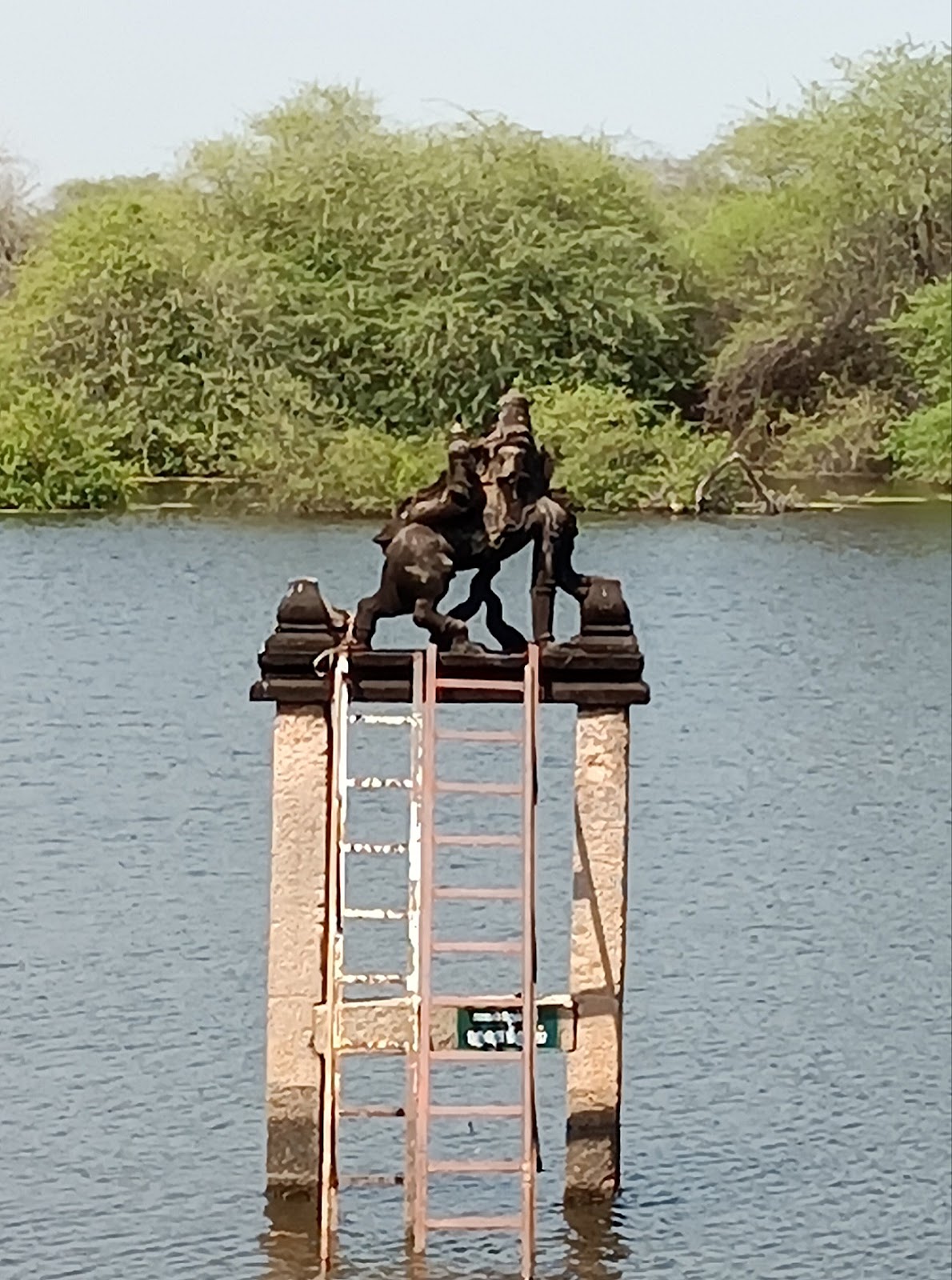Purusha mirugam was renowned as one of the biggest devotees of Lord Shiva.
As the name suggests, he was half man and half animal with the lower body of a lion and a human often he is depicted with a bell and lamp in their hands, sometimes before a Shiva Linga. This depiction refers to the character of the purushamriga described in myth as a devotee of Shiva.
The sculptures of purusha miruga the character described in the tradition and literature as a rishi with great knowledge and as a devotee of Shiva. Often it's represented with beards and moustaches, and are sometimes shown with their matted hair knotted on top of their head, or with a crown.
The purushamriga plays a significant role in daily as well as yearly ritual of South Indian Shaiva temples. In the shodhasha- upakaara ( sixteen honors) ritual, performed between six times at significant sacred moments through the day, it decorates one of the lamps of the diparadhana or lamp ceremony. And in several shiva temples the purushamriga is also one of the vahana or vehicles of the deity during the processions of the Brahmotsava or festival.
According to oral tradition the Nayaka dynasty had an exceptional relationship with the purusha miruga , which accounts for the prominent role this mythological being played in the sculpture of this period. The ulagalantha chozlan pererii ( periya kanmai ) lake in thiruvathavoor dates back thousands of years and is said to have been constructed by Rajaraja 1, an emperor of the Chola dynasty. In the west of this greater lake we could see the nayaka period purusha miruga. It is worshipped as the guardian deity of shutter.
In times of no rain, people of the area believe that rain will come if they break 100 coconuts and pray to the purusha miruga.
The tradition recounts that the mother of Tirumalai Nayaka (who ruled between 1623 and 1659) performed a special worship of the purushamriga wishing to conceive. In the Kanya Kumari district, on the southernmost tip of India, during the night of Shiva Ratri devotees run 75 km while visiting and worshiping at twelve Shiva temples. This Shiva Ottam (or Run for Shiva) is performed in commemoration of the story of the race between the Purushamriga and Bhima, one of the heroes of the epic Mahabharata.




No comments:
Post a Comment